Selecting the appropriate components of a roof rack crossbar system can be a daunting task if you’ve never done it before. Manufacturers provide fit guides to help you find the racks that will fit your car, but even those have multiple options and you have to make sure to select the right parts. We’ll go over the selection process for the two biggest brands, Yakima and Thule, to get a better and more confident understanding of what’s involved.
Thule Fit Guide - Yakima Fit Guide
Basic Components
Let’s start with the basic components. Crossbar systems are assembled from three main components: the crossbars themselves, towers or “feet”, and (usually) a fit kit. It is very important to accurately input your vehicle into the fit guide. Some vehicles will have seemingly minor changes from year to year or different trim levels, but they may require entirely different roof rack components.
The crossbars typically come in a few different sizes, and can attach to different tower types within a specific brand. For example, Thule’s WingBar Evo will attach to their various towers: Clamp Evo, Raised Rail Evo, Flush Rail Evo, etc.
Classic Round or Square bars are a little less expensive, but aerodynamic crossbars can provide a quieter ride, and the T-slot options allow for seamless integration of accessory carriers.
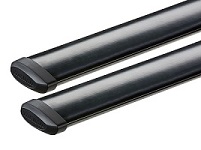
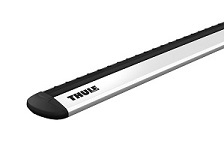
The towers start to get more specific, and are designed to fit certain roof types. The Thule Clamp Evo is for vehicles that have a bare roof with no other siderails already installed. The Thule Raised Rail Evo is for vehicles that have a factory raised siderail already installed.
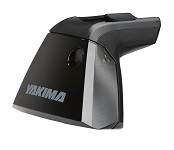
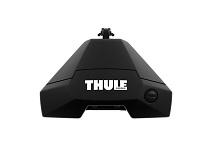
Fit kits are even more specific, and are usually designated to only a specific vehicle. A fit kit designed to be used with Thule Flush Rail Evo towers will not work with Thule Clamp Evo towers. The same fit kit will probably only fit a specific year range of a specific vehicle (or sometimes family of vehicles). Vehicles that come equipped with factory raised siderails will often not require a fit kit, since the towers that attach to these siderails can be made generic enough that a vehicle specific fit component is not required.
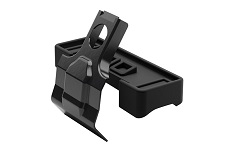
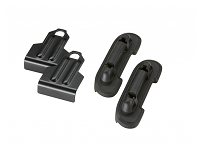
Some vehicles will also have a more flush or factory style option. Thule calls these the AeroBlade Edge or now the WingBar Edge, while Yakima has the FlushBar and the RailBar. These are usually sold per bar, and may also require a fit kit or set of fit kits. It's not uncommon to use a different bar size for the front than for the rear.
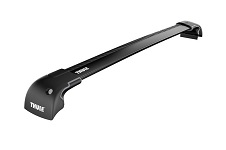
Some other accessories might show up on the fit guide as well. Yakima will list the size fairing that is the best choice for a specific fit. These can be helpful with cutting wind noise, but are not required. Most crossbar systems will not come with locks; these need to be purchased separately. They aren’t required for installation, but they are recommended to help make sure your rack doesn’t wander off when you don’t want it to.
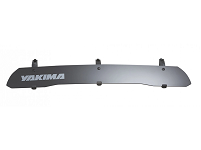
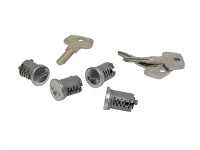
Differences between Thule & Yakima
While Thule and Yakima racks are composed of the same types of basic components, there are some differences in the way this information is laid out and how the items are packaged.
The main difference will be the fit kits. Thule fit kits are packaged with components for all four attachment points in one box, so you only need one fit kit. Yakima fit kits are often sold in pairs, which will require two fit kit boxes. Sometimes a different fit kit will be used in the front than in the back. This varies depending on the fit, but the fit guide should indicate whether two fit kits or only one fit kit is required.
Another difference is how the crossbars attach to the towers. Thule used to make two different versions of each tower: one type for square bars and the other for aero bars. Now, all of their crossbars attach to the tower in the same way via a slot in the bottom of the bar. Yakima CoreBar and JetStream crossbars come with the required adapters to attach the crossbars to the tower. The RoundBar and HD Bar require additional adapters to attach the tower. This is indicated in the fit notes.
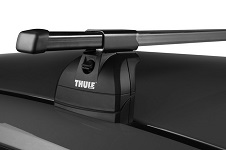
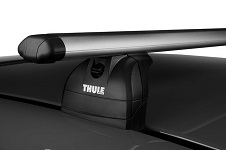
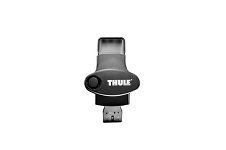
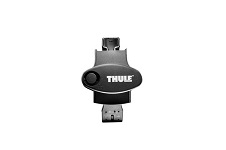
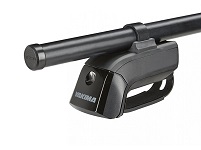
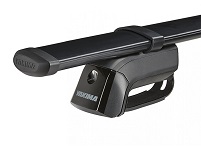
Bar size choice is another major difference between the two companies. Thule crossbars have a limited amount of adjustability on the bottom of the bar as far as where the towers can be positioned. Yakima towers could be positioned anywhere on the bottom of the bar. Because of this, Yakima lists the “minimum” required bar size, giving you the option to size up to a longer bar if you want to. Thule fits can go up 1 bar size in most cases, but you quickly become limited by crossbar/tower adjustability.
Important Fit Notes
Thule and Yakima fit guides will list not only the crossbars, towers, and fit kits required for the vehicle, but also important vehicle specific notes that can help determine compatibility with the intended use of the rack.
The two biggest fit notes to check are the weight capacity and the crossbar spread. The highest weight capacity generally published is 165 pounds, although the crossbars themselves may be rated for something higher (Thule in particular often lists the crossbars as having a 220 pound weight capacity, but that doesn’t mean the vehicle can safely carry that amount). This is important to note so that you can make sure whatever load you want to carry on the roof does not exceed this limit, otherwise you may encounter an unsafe situation.
The crossbar spread is the distance from the front crossbar to the rear crossbar. Certain carriers may require a specific window of crossbar spread. For example, a 2 door coupe with an 18” crossbar spread does not provide enough support to carry most boats. Some cars with fixed points may have mounting points so far apart that not every carrier may be able to be adjusted to accommodate it. Thule typically aims for a 24-28” crossbar spread, and Yakima’s are usually 30-32”.
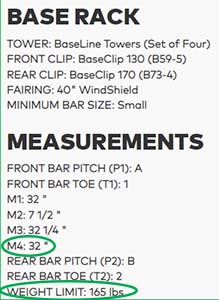
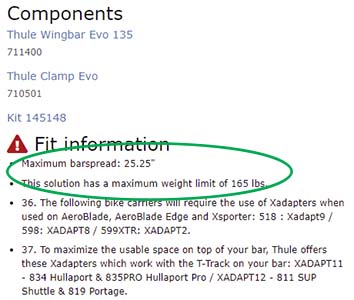
Underneath these fit specifications will typically be a list of other important details for that particular vehicle. These may be recommendations of certain carriers that are not a good fit, tips for a smoother and more secure install, or other accessories that may be required for certain combinations.
Finding Items on our Website
Once you know what components you need, the name of the item or the part number will bring it up in our search bar. You can also browse by category, but the part number will pull the item right up. Our search will not display items that are out of stock, so if you’re having trouble finding something, it might not be on hand (which has been a continuous problem since product availability issues starting mid 2020). As always, you can reach out to us directly for help, suggestions, and tips for finding which rack will work best for you! Contact us here!

